How to choose a mounted sprayer?
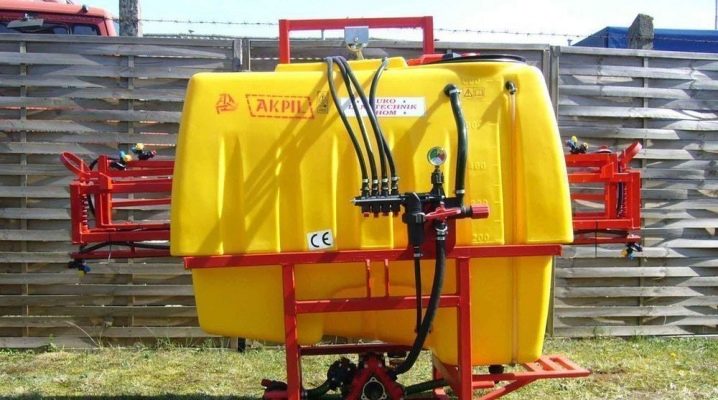
One of the most common types of agricultural implements for tractors is the sprayer. This equipment becomes a real godsend in areas with hot arid climates. We can safely say that the overall yield of crops largely depends on its presence. The modern market offers the widest selection of various devices, however, their cost is quite high, so many craftsmen prefer to do everything they need with their own hands at home.
Peculiarities
Such equipment is subject to a number of important requirements:
- the capture of the entire plant should be as even as possible and not change even with strong gusts of wind;
- during the movement of equipment, plants should in no case be damaged;
- A good sprayer must be ergonomic and have a clear and easy-to-follow operating manual.
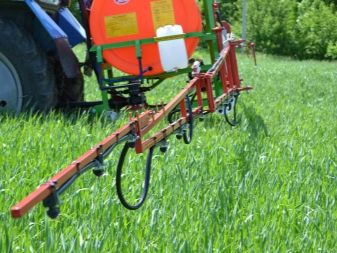
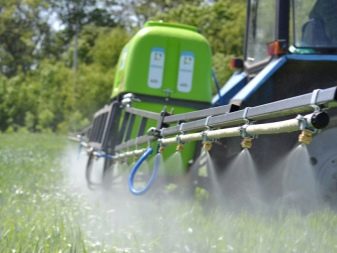
The garden tractor sprayer is used for high-quality irrigation and treatment of agricultural plants with fertilizers and insecticidal preparations.
Tractor sprayers are used to work with machines of the 0.6-1.4 class with a draft force of at least 6 kN. At the very beginning of work, the sprayer is fixed to the machine hitch so that the sprinkler shaft is connected to the power take-off shaft of the tractor itself, otherwise you will not be able to achieve uninterrupted operation of the unit.
The design of such a device includes:
- reservoir, reinforced with ribs for the prevention of water hammer;
- a metal frame to which the container is mounted directly;
- hydraulic boom with fuses installed on its arcs;
- various shock absorbers;
- hydraulic corrector;
- sprayer, in the structural elements of which nozzles are built-in.
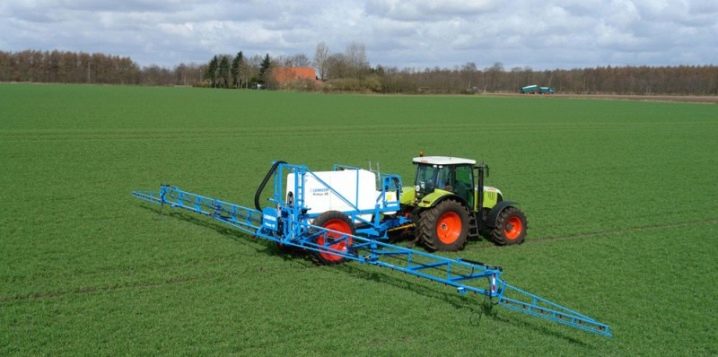
The operation of such sprayers is regulated by a special toggle switch, which is installed inside the cab of the machine. Thanks to this, the user minimizes his participation in the process of watering and processing plantings.
It is necessary to pay attention to the fact that, depending on the model, the tractor sprayer can be equipped with barrels, the reservoir of which is designed for large volumes of water - from 200 to several thousand liters. This design allows you to choose the optimal modification for efficient processing of both a relatively small land plot and huge fields.
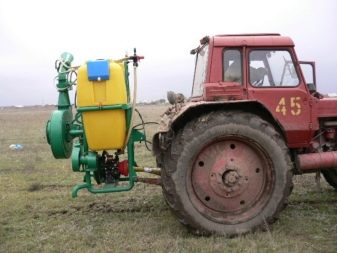
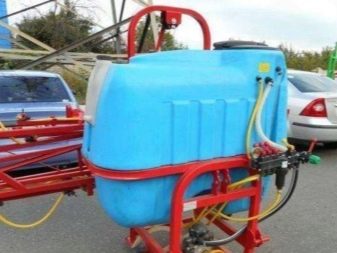
Varieties of sprayers
The modern industry offers tractor sprayers of various modifications with different operational characteristics. One of the most important parameters for classifying equipment is how it is mounted on the tractor. On this basis, various options for sprinklers are distinguished.
- Rod models, fixed to the chassis hitch. Such installations usually have tanks with a volume of 500 to 900 liters and can effectively process a strip 10-20 m wide. The advantage of such units lies in their maneuverability, mobility and compactness, and relatively low productivity should be attributed to the number of disadvantages.
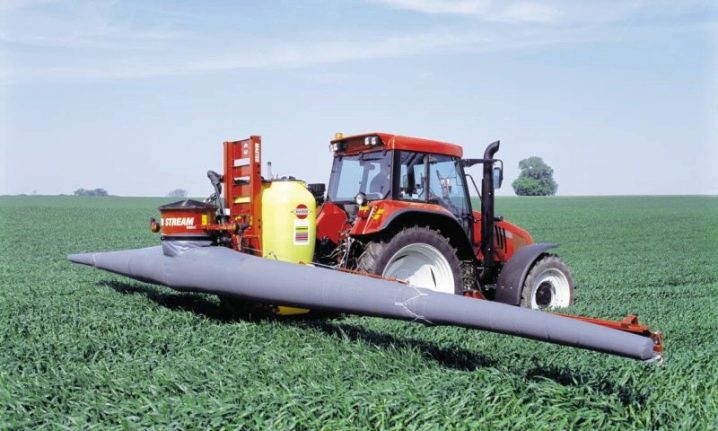
- Models that are attached to the tractor via towing attachments. These types of sprayers are usually used to treat plants with insecticidal and fungicidal solutions on areas up to 1,000 hectares of land. The width of the processed strip during operation can reach 36 meters.The volume of the tank, as a rule, varies from 2 to 5 cubic meters. Such devices are popular in Eastern Europe, especially in Poland (for processing large agricultural land).
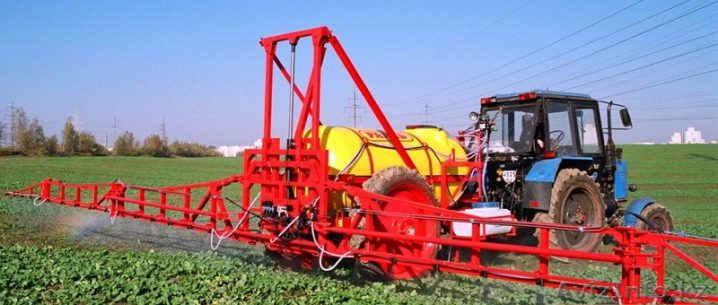
- Self-propelled models - this category includes fairly large products that are widespread on plantations in America and in Western Europe. This equipment is designed to process cultivated areas from 1 hectare, and its cost is several times higher than the prices for other types of sprayers.
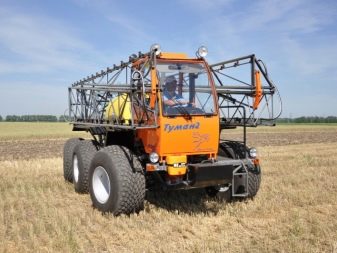
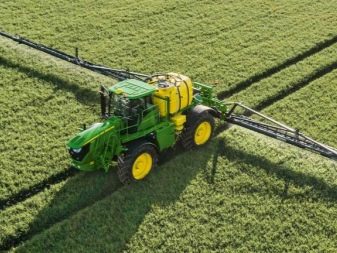
By the size of the built-in tank, the following types of sprayers are distinguished:
- ultra-small - equipped with tanks with a volume not exceeding 5 cubic meters;
- small - in such models, the tanks are slightly larger, their capacity varies from 75 to 100 cubic meters;
- medium - correspond to 100-200 cubic meters;
- large - equipped with containers of more than 200 cubic meters.
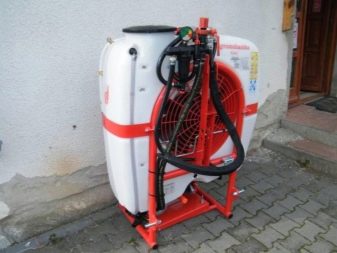
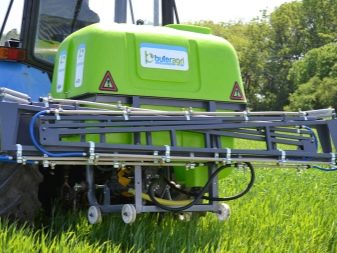
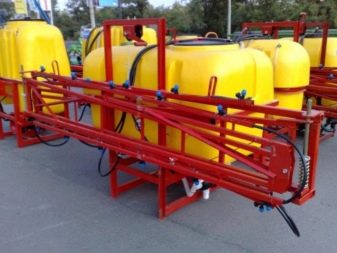
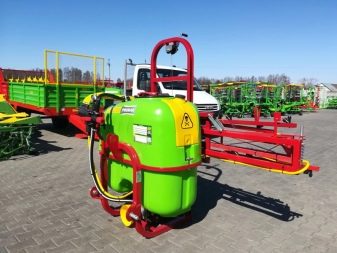
Most often, the last two varieties are used for tractors, equipment with smaller dimensions is less often used - it is optimal in cases where the row spacing on the site is small (or for a mini tractor).
According to the mechanism of operation, tractor sprayers are divided into several types.
- Fan rooms. In this case, water atomization occurs as a result of the action of the air jet blown by the built-in fan. They are usually designed for the cultivation of fields and tall horticultural crops.
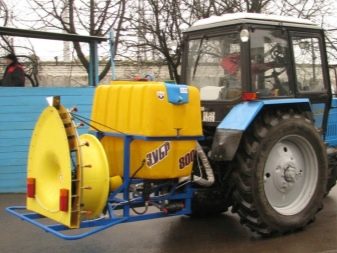
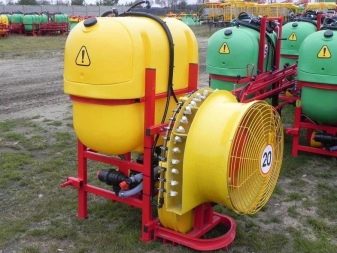
- Pumping stations. The work begins under the influence of pressure injected into the tank, the result of such processes is the spread of pesticides, fertilizers and other types of liquids. The units are designed for spraying vegetables and cereals. It is worth giving preference to the pumping modifications, since they distribute the liquid more evenly and efficiently, while the deviation is quite minimal (even in strong winds).
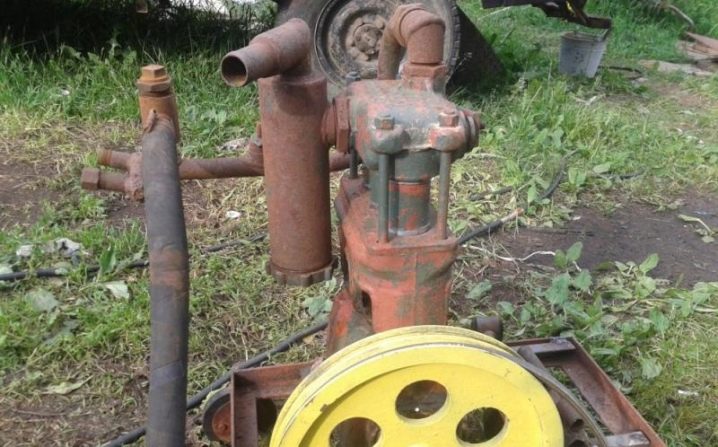
Homemade sprayer
Many home craftsmen prefer to make their own sprayers for the tractor - this is not surprising, given the how many advantages do such products have:
- the ability to manufacture a sprayer of an individual shape and size, which best suits the specifics of the planting zone;
- when self-manufacturing such an assembly, it can be additionally completed with parts of any other materials;
- individually made equipment allows for width adjustment, so that it can be used for areas with different parameters of the row spacing;
- handicraft installations are suitable for both irrigation and spraying of medicinal and prophylactic preparations for plants;
- if desired, the structure can be made composite - in this case, it will take up very little space during storage and transportation;
- self-made installations can be used for tractors of any type (from GAZ to branded models);
- self-made models are usually distinguished by the simplest design, so they are easy to use and maintain.
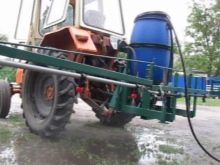
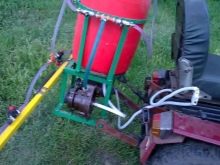
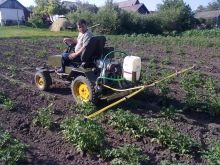
Most importantly, homemade sprinklers are much cheaper than store-bought ones. It is no secret that for most farms, the purchase of any field agricultural machinery is often unprofitable, especially if the cultivated areas are small. Therefore, the manufacture of a sprayer from improvised means allows you to get an effective and efficient device at minimal cost.
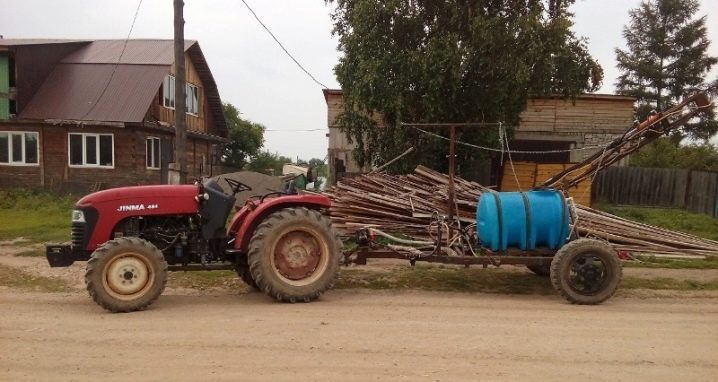
It is quite simple to make it. You will need:
- tank for fungicides, water or pesticides - you can use a steel or plastic barrel for this;
- spraying system - hoses, water cannons or fans;
- flexible pipes;
- pumps;
- refueling device.
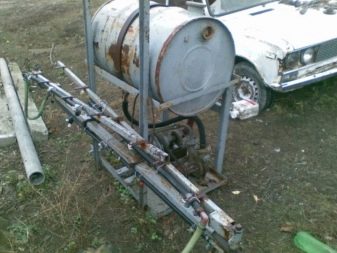
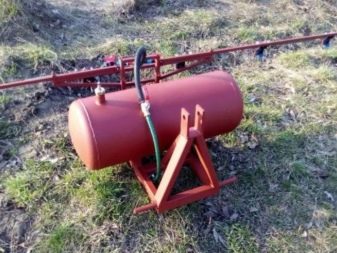
In addition to all of the above, you will need metal corners with different section options.
The procedure for the main steps in the manufacture of a homemade tractor sprayer is approximately as follows:
- first you need to weld a metal frame from a corner - such a desk is complemented by a pipe and liquid distributors;
- a reservoir for pouring the working fluid is fixed on the frame;
- a pump should be placed inside the tank;
The sprinkler must be attached to the tractor so that it is driven by the tractor PTO shaft.

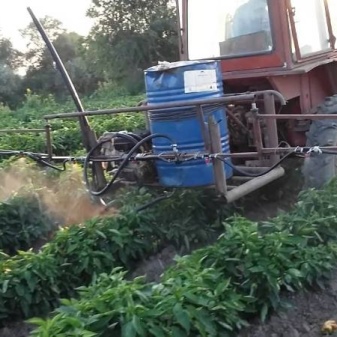
If you have minimal technical skills, you can make such a mounted installation quite quickly, easily and simply, and at the same time the quality will be no lower than that of the Polish models popular on the domestic market.
For an overview of the mounted sprayer, see the following video.


































































The comment was sent successfully.